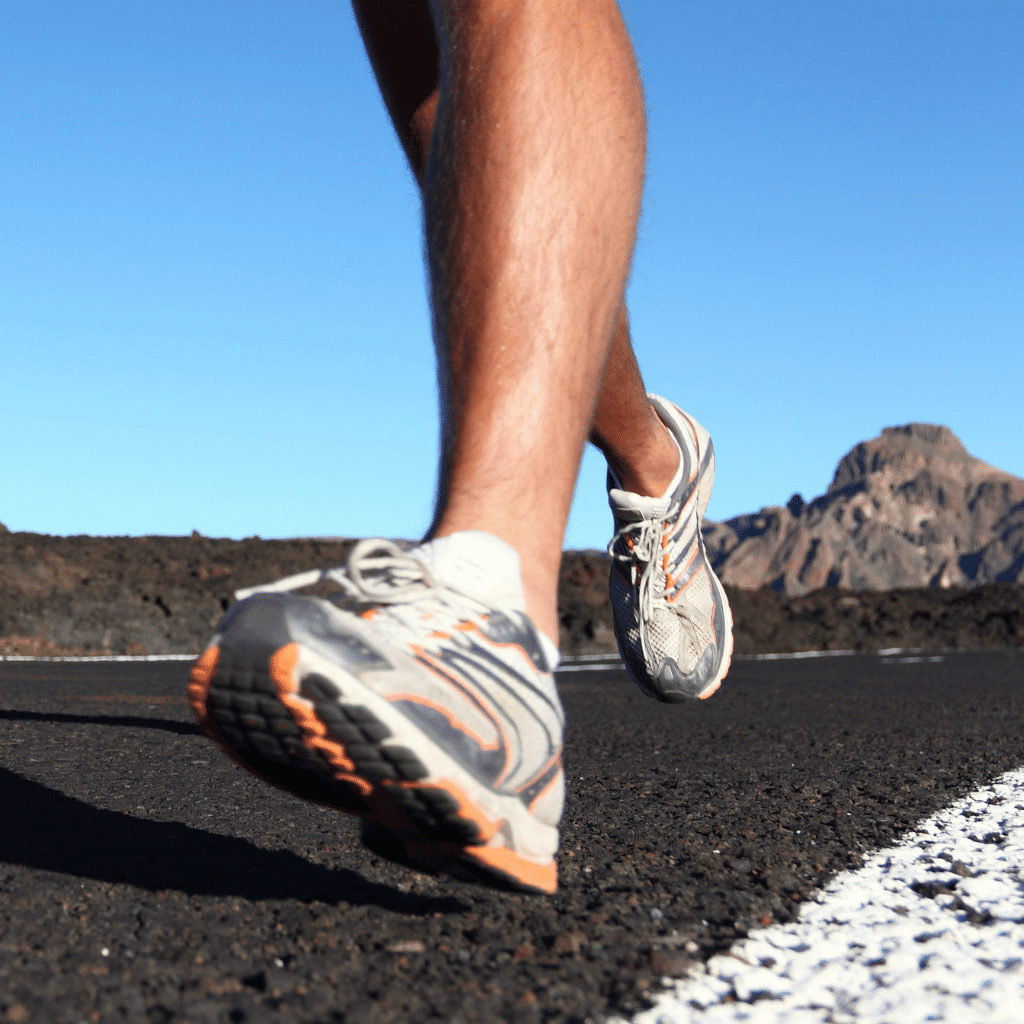
As a runner, you know that every aspect of your performance can make a difference, from your training regimen to your gear. However, one often overlooked but essential factor in optimizing your running experience is your breathing technique. Proper breathing not only enhances your endurance but also improves your overall running efficiency. It's a skill that can be learned and mastered, allowing you to unlock your full potential on the track or trail.
In this article, we will delve into the world of breathing techniques for runners. We will explore various strategies that can help you optimize your breathing, increase your lung capacity, and improve your running performance. Whether you're a beginner looking to establish a strong foundation or an experienced runner aiming to refine your technique, these breathing techniques will be valuable tools in your running toolkit.
Before we dive into the specific techniques, we'll discuss the importance of proper breathing for runners. Understanding why breathing plays a crucial role in your performance will motivate you to prioritize and invest time in developing your breathing skills. We'll also touch on the benefits of different breathing techniques, including how they optimize oxygen intake, enhance relaxation, and even prevent injuries.
So, if you're ready to take your running to the next level and harness the power of your breath, let's explore the world of breathing techniques for runners and discover how you can enhance your endurance and efficiency on every stride.
The Importance of Breathing
Before diving into specific breathing techniques, it's crucial to understand why proper breathing is essential for runners. Here are a few reasons:
- Efficient oxygen intake: Effective breathing ensures that your body receives an adequate oxygen supply, which is crucial for sustaining endurance and energy levels during a run.
- Improved performance: Proper breathing technique helps to optimize the use of oxygen by your muscles, leading to better performance and reduced fatigue.
- Enhanced relaxation: Focused and controlled breathing can help you relax, reduce tension, and stay mentally calm during your runs.
- Injury prevention: Deep breathing promotes better posture and core engagement, reducing the risk of injuries and improving running mechanics.
Nose Breathing

Nose breathing, as the name suggests, involves inhaling and exhaling solely through your nose during your runs. This technique has several benefits:
- Improved filtration: The nose acts as a natural filter, warming and humidifying the air as it enters your respiratory system, reducing the risk of irritants.
- Optimized oxygen uptake: Breathing through your nose helps to regulate the pace and depth of your breaths, ensuring a more controlled and efficient oxygen intake.
- Enhanced relaxation: Nose breathing can have a calming effect on your nervous system, promoting relaxation and reducing stress levels.
Diaphragmatic Breathing
Diaphragmatic breathing, also known as belly breathing or deep breathing, involves fully engaging your diaphragm and expanding your belly as you inhale deeply. This technique has several advantages:
- Improved oxygen exchange: Diaphragmatic breathing allows for a greater oxygen exchange in the lower lungs, increasing the efficiency of oxygen absorption into the bloodstream.
- Enhanced core stability: Deep breathing engages your diaphragm and core muscles, promoting better stability and alignment during your runs.
- Reduced tension: By consciously focusing on deep breaths, you can release tension in your upper body and promote a more relaxed running form.
Cadence-Based Breathing
Cadence-based breathing involves synchronizing your breaths with your running cadence, typically aiming for a 2:2 or 3:3 pattern (inhaling for two or three steps, exhaling for two or three steps). This technique offers several benefits:
- Optimized oxygen utilization: Aligning your breaths with your running rhythm helps to ensure a steady and efficient supply of oxygen to your muscles.
- Better pacing: Cadence-based breathing can serve as a natural pacing mechanism, helping you maintain a consistent and controlled running speed.
- Mental distraction: Focusing on your breath and coordinating it with your steps can divert your attention from fatigue or discomfort, enhancing mental endurance.
Interval Breathing
Interval breathing involves alternating between different breathing patterns during your runs, specifically during high-intensity intervals. This technique can help you manage your breathing and optimize your performance during intense efforts. Here's how it works:
- Power Breathing: During high-intensity intervals, such as sprints or hill climbs, take quick, forceful breaths to maximize oxygen intake and support the increased demands on your muscles.
- Recovery Breathing: During recovery periods between intervals, switch to slower, deeper breaths to promote relaxation, lower your heart rate, and facilitate recovery.
Rhythmical Breathing
Rhythmical breathing involves establishing a consistent breathing pattern based on the number of steps you take during each inhalation and exhalation. This technique can help you find a comfortable rhythm and maintain a steady pace. Here are a few common patterns:
- 2:2 Breathing: Inhale for two steps, exhale for two steps. This pattern is often used during easy or moderate runs.
- 3:3 Breathing: Inhale for three steps, exhale for three steps. This pattern provides a slightly slower breathing rate and is suitable for moderate efforts.
- 2:1 Breathing: Inhale for two steps, exhale for one step. This pattern is often used during high-intensity runs or when you need an extra boost of oxygen.
Breathing Cadence
Establishing a specific breathing cadence can help you maintain a consistent rhythm throughout your runs. Here's how to determine your optimal breathing cadence:
- Count your steps: Start by counting your steps for a minute while running at a comfortable pace.
- Adjust your breathing: Based on your step count, experiment with different breathing patterns, such as inhaling for three steps and exhaling for two steps, until you find a cadence that feels natural and sustainable.
- Practice and adapt: Gradually incorporate your chosen breathing cadence into longer runs, adjusting it as needed to match the intensity of your workout or race.
Mindful Breathing
In addition to specific techniques, incorporating mindfulness into your breathing can have a profound impact on your running experience. Mindful breathing involves being fully present and aware of your breath, allowing you to connect with your body and stay focused. Here's how to practice mindful breathing:
- Find a comfortable rhythm: Pay attention to the sensation of your breath as it enters and leaves your body. Notice the pace, depth, and quality of each breath.
- Acknowledge distractions: When your mind starts to wander, gently bring your focus back to your breath. Accept any distractions without judgment and let them go.
- Stay present: Use your breath as an anchor to keep you grounded in the present moment, helping you maintain mental clarity and focus throughout your run.
Conclusion
Congratulations! You have now gained valuable insights into the world of breathing techniques for runners. By implementing these techniques and incorporating them into your training routine, you can enhance your endurance, improve your running efficiency, and elevate your overall performance.
Remember, proper breathing is not just about oxygen intake; it's a holistic approach that benefits your physical, mental, and emotional well-being. By focusing on your breath, you can find a sense of calm, reduce stress, and stay mentally strong during your runs.
As with any skill, mastering these breathing techniques requires practice and patience. Start by incorporating them into your training gradually, allowing yourself time to adapt and find what works best for you. Experiment with different techniques, listen to your body, and make adjustments as needed.
Additionally, don't underestimate the power of mindfulness and mental focus. Use your breath as an anchor, bringing your attention back to the present moment and maintaining a positive mindset. Embrace the rhythm of your breath as it aligns with the rhythm of your strides, allowing it to carry you through each mile.
So, lace up your running shoes, take a deep breath, and embark on your next run with confidence. With these breathing techniques as your ally, you are equipped to enhance your endurance, optimize your efficiency, and experience the joy and fulfillment that running brings.
Remember, running is not just about reaching the finish line; it's about the journey, the growth, and the discovery of what you are truly capable of. Embrace the power of your breath, and let it propel you forward on your running adventures.
Happy running!








